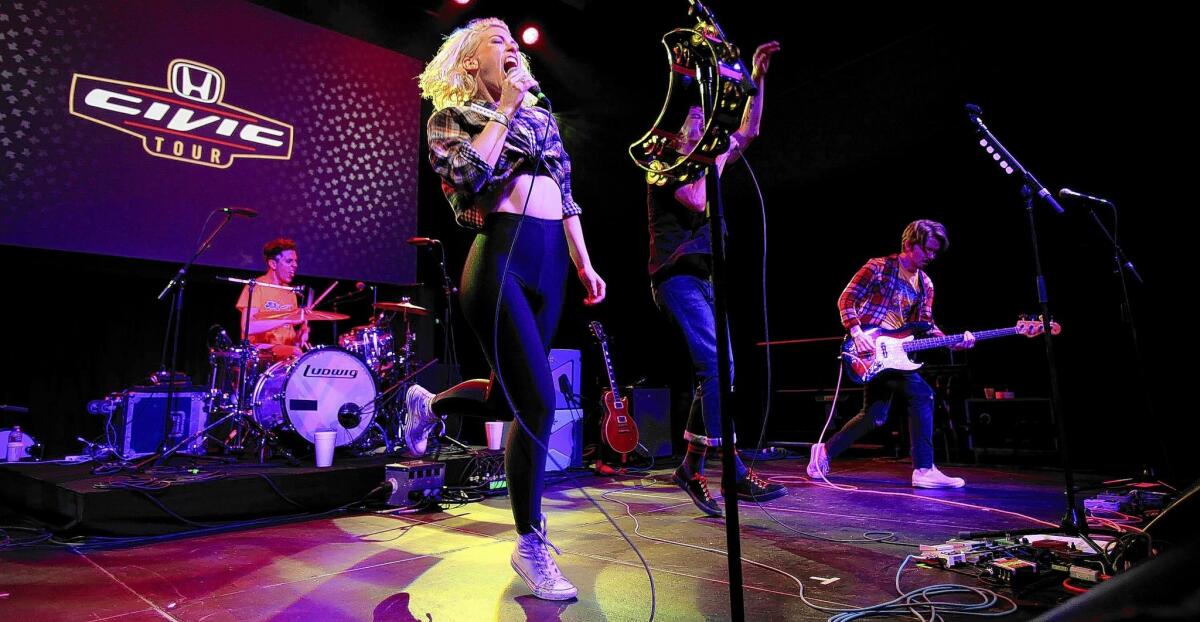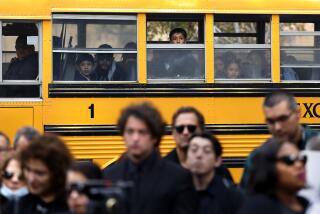Honda shifting ad dollars into music business to attract young buyers

Hoping to attract young car buyers, American Honda Motor Co. plans to pull money from television advertising to launch its own music-streaming channel and sponsor dozens of high-profile concerts and music tours.
Like other automakers, Honda is struggling to connect with a market segment that appears less interested in cars and is harder to reach through traditional advertising.
“Quite frankly, we have to figure out how to talk to these people, and music is a great platform to do that,” said Tom Peyton, Honda’s assistant vice president of advertising and marketing.
Members of the Millennial or Gen Y generation — generally considered to be people born in the early 1980s to the early 2000s — don’t consume traditional media like their baby-boomer parents, Peyton said.
They watch less television, and when they watch, they generally load a show on a digital video recorder and skip over the commercials or stream TV through a digital device, Peyton said. Although the generation is active on social media, banner ads, text messages and twitter snippets don’t carry the weight of a video commercial, Peyton said.
More challenging to automakers, fewer young people drive. Slightly less than 86% of U.S. adults ages 25 to 29 have driver’s licenses as of 2012, according to Michael Sivak, a professor at the University of Michigan. That compares with just under 96% of people of the same ages a generation ago in 1983.
People in their 30s and younger develop important car-buying habits that Honda wants to encourage with advertisements for its smaller cars, especially the Civic, Fit compact cars and new HR-V, a small crossover. Peyton believes this group also contains buyers for the sporty Accord coupe.
Honda didn’t disclose how much money it is redirecting from prime-time TV to the music business. The company spent about $370 million on U.S. television advertising last year, according to Kantar Media, an advertising research firm. It spends about $1 billion annually on all of its U.S. marketing.
Peyton said viewers will still see some commercials on television. But it will begin using TV advertising money to pay concert promoter Live Nation Entertainment, radio company Clear Channel, and television channel Revolt and others to produce concerts for Honda.
Performances from the concerts will be broadcast via YouTube and on HondaStage, a video channel that the automaker plans to establish.
Honda will program content from its annual Civic music tour and various music festivals that the auto company already sponsors, such as Governors Ball in New York, Music Midtown in Atlanta and Austin City Limits.
The company will sprinkle video ads and other information about its cars and motorcycles into the content. Also, Honda drivers will be able to access HondaStage audio content in their cars through the Aha mobile app.
Essentially, this puts Honda into the music business, so that it is “at center stage and doesn’t have to share the audience with others,” Peyton said.
So far the featured artists will include Grouplove, American Authors and the Latin group 3BallMTY. Honda said other big-name artists will be added to the lineup. Many of the performances will take place in Southern California.
Live Nation will produce three concerts in three cities starting with one in Los Angeles in July. Clear Channel will do 12 shows at the iHeartRadio Theater in Burbank. Revolt studio in Hollywood will host an additional 40.
In all there will be 200 live performances over the next 12 months, providing content and about 2 billion advertising impressions on music video streamers Vevo, YouTube and Clear Channel’s iHeartRadio, Peyton said. The music campaign also will generate countless social media posts on Facebook and Twitter, he added.
“We think we can get the big numbers,” he said. “It will be a potent marketing tool for us.”
Companies such as Honda are shifting their marketing strategies to deal with changing trends in advertising and demographics, said Christopher Cakebread, an advertising professor at Boston University.
“Advertisers for years have seen declines in viewership in prime time — and at the same time have seen the cost of buying that advertising rise,” Cakebread said. “That doesn’t make sense.”
The biggest decline in prime-time TV viewership is among young people, he said.
Automakers are also overhauling the message, however it gets delivered.
“How fast and safe and sexy a car is doesn’t really appeal to 18- to 30-year-olds anymore,” Cakebread said.
Younger buyers are interest in technology, “since their life is so focused around it, especially the ability to stay connected, while still driving safely,” he said. Environmentalism and good gas mileage are important attributes as well, he said.
Music, as well as sports, work as conduits to that age group, Cakebread noted.
Other analysts were more skeptical of Honda’s approach.
When big advertisers such as auto companies make pronouncements about shifting money from prime-time commercials, they are actually trying to send a message to the media companies, said Brian Wieser, an analyst at Pivotal Research Group, an equity research firm that focuses on advertising, media and communications companies.
These types of announcements always seem to come during the so-called upfront sales period, he said. That’s when the networks sell two-thirds of their advertising time in advance of the upcoming season. Advertisers make commitments to buy ad spots for a certain price in exchange for the network guaranteeing audience levels.
If a show does not deliver the promised audience, then the network is obligated to compensate or “make good” on the ratings deficiency by providing additional time.
“It is a negotiating ploy,” Wieser said. “Advertisers don’t have a credible way to walk away from the negotiations.”
Twitter @latimesjerry







